

Information about the services that our railcars have provided can be found under 'Out and About' below and work that has taken place on the railcars at Llangollen and Butterley can be found under 'Unit-specific work' below.
Maths Question 1: Given three 2-car railcars, how many different ways are there of forming a 4-car unit?
The answer is, of course, three (or six if the order is deemed to be important).
However, the answer is zero if two of the railcars turn out to be unavailable. Although the probability of that happening is very small, the gremlins caused it to happen on Tuesday 1 August when the crew turned up early to put together the requested 4-car unit only to discover that two of the units failed their 'Fitness to run' examination: the no. 1 engine of 50454 (the power car of the class 104/108 hybrid set) had a faulty starter motor and the no. 1 engine of the class 108 power car (51933) had a broken fuel spill pipe.
Their only option was to use the remaining railcar (the Wickham class 109) as a 2-car with a consequent reduction in elbow room for the passengers.
Maths Question 2: In how many ways can the instruction to couple together the two halves of the class 104 be misinterpreted?
Well, without getting too technical, the short answer is one ...

Someone commented that the driver would, at least, have a short walk when changing from one cab to the other!
Since the previous report all of the timetabled railcar services have been operated by the class 108 and the Wickham class 109, either solo or in multiple, except for one that was operated by the pairing of the class 109 and the blue/green hybrid class 104/108 unit.
The following pictures show the 4-car class 108+109 at Corwen prior to the last service of the day to Llangollen on Tuesday 8 August...

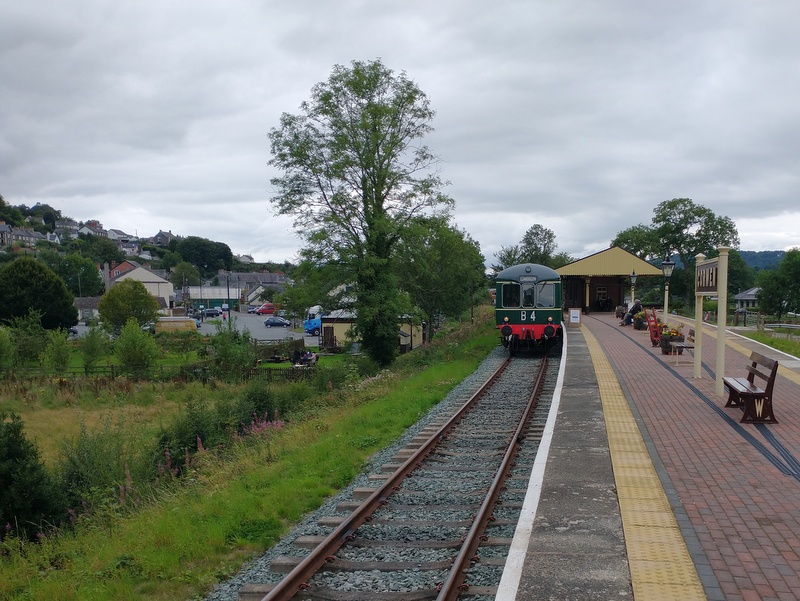

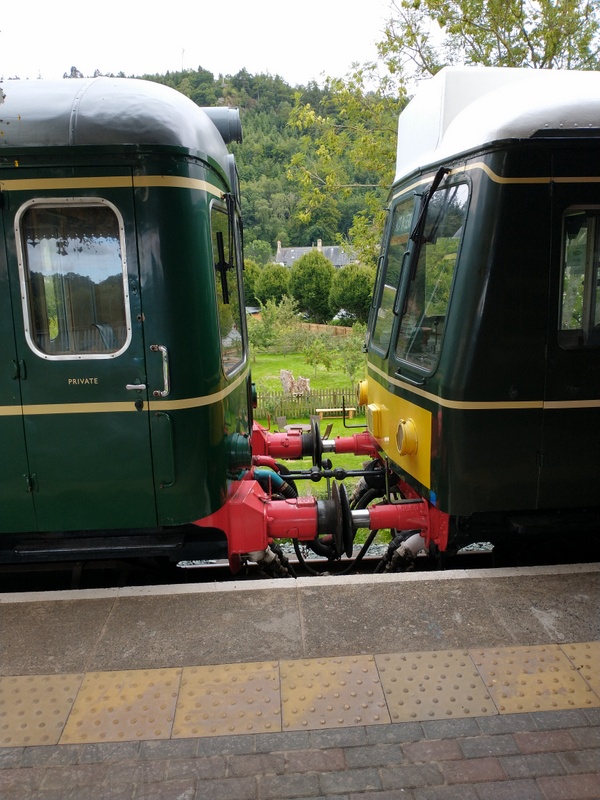
...and at Llangollen Goods Junction on the way back to the depot after the close of play...
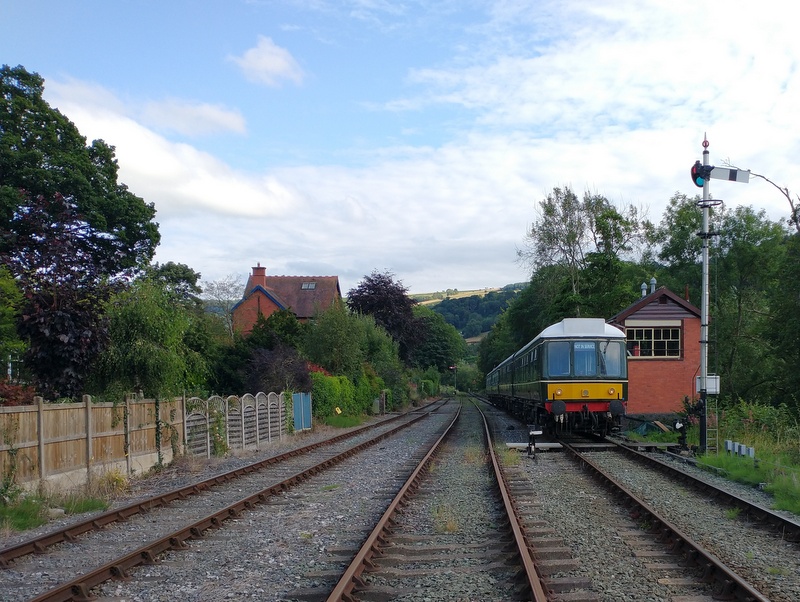
The cracked window has now been replaced and the seat that was removed to gain access has been reinstated ...
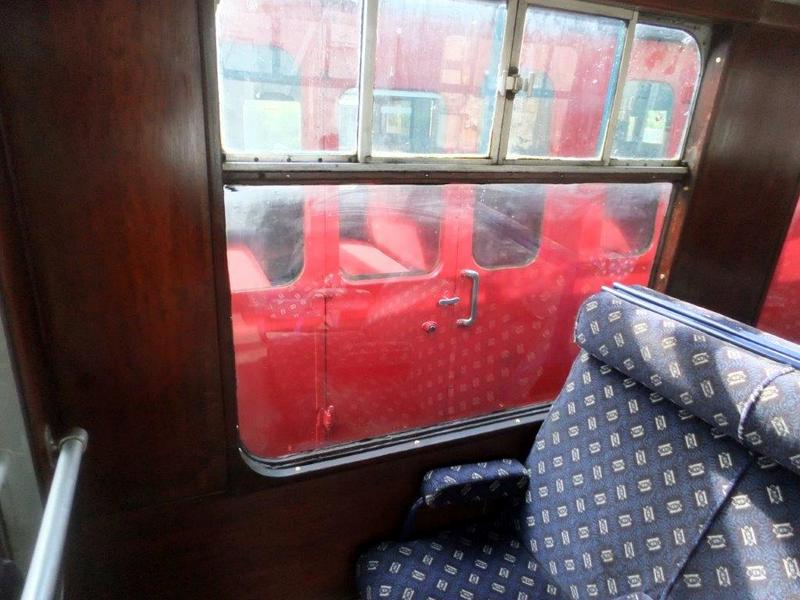
As reported above the no. 1 engine of 50454 failed to start due to a fault with a clutch inside its starter motor. The starter motor was replaced during the next working meeting and the following picture shows it being secured in its rightful position ...
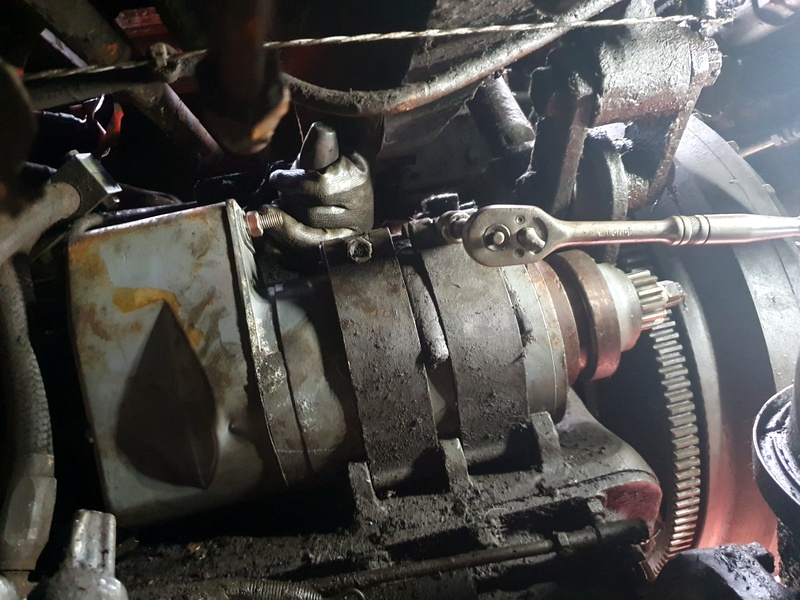
The experts surmised that it has a cracked head, or possibly just a head gasket - a job to tackle next time.
The top sections of the two vestibules on the driver's side and the upstand in the rear compartment on the driver's side were painted...
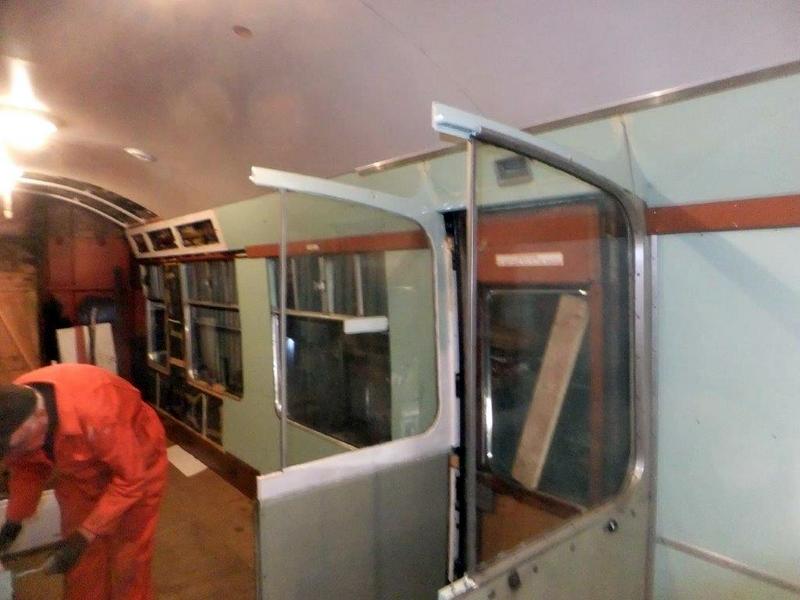
Also on the driver's side the first window in the rear compartment had its outer aluminium frame fitted.
As reported above the no.1 engine of 51933 was diagnosed as having a split fuel spill pipe which is used to return excess fuel to the tank. The replacement of the pipe turned out to be much more involved than anticipated because it was one of those jobs for which it was possible either to see what needed to be done or to do it but not both at the same time...
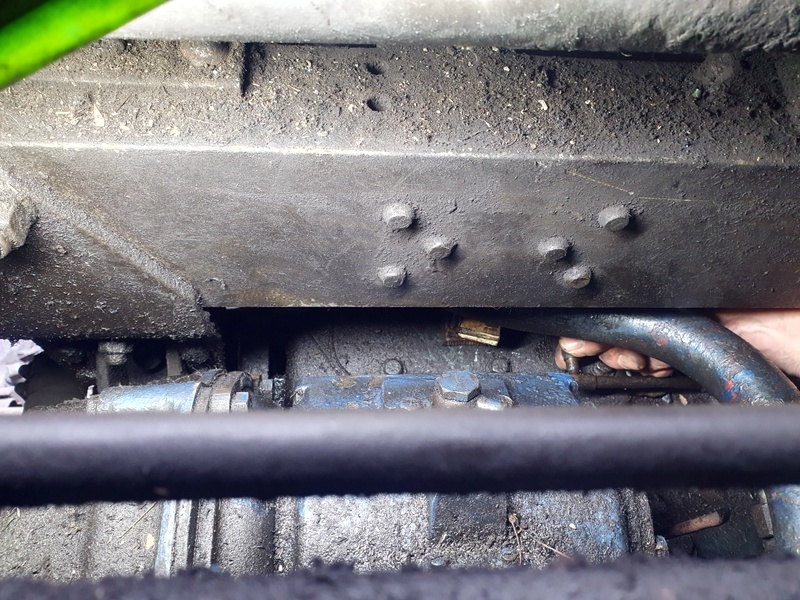
The Cravens restoration team used some of their skills and green formica to produce some door panels for the class 127...
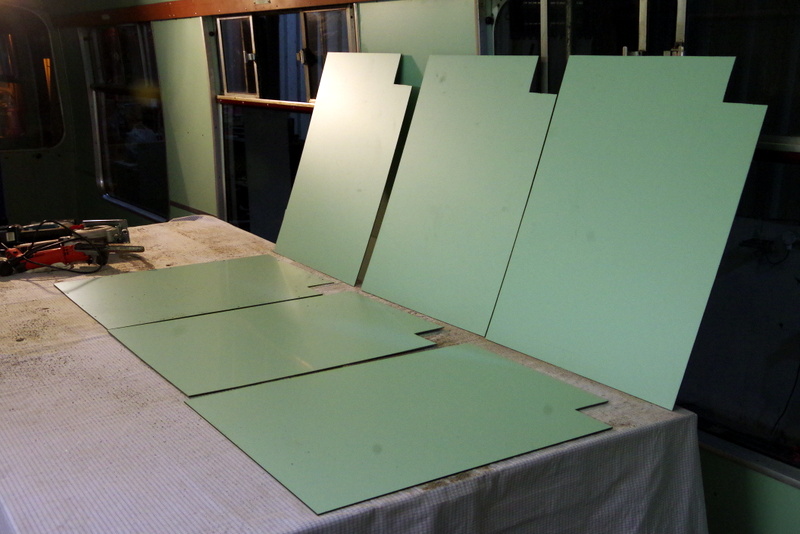
Also work continued with the refitting of windows and the painting of the roof.
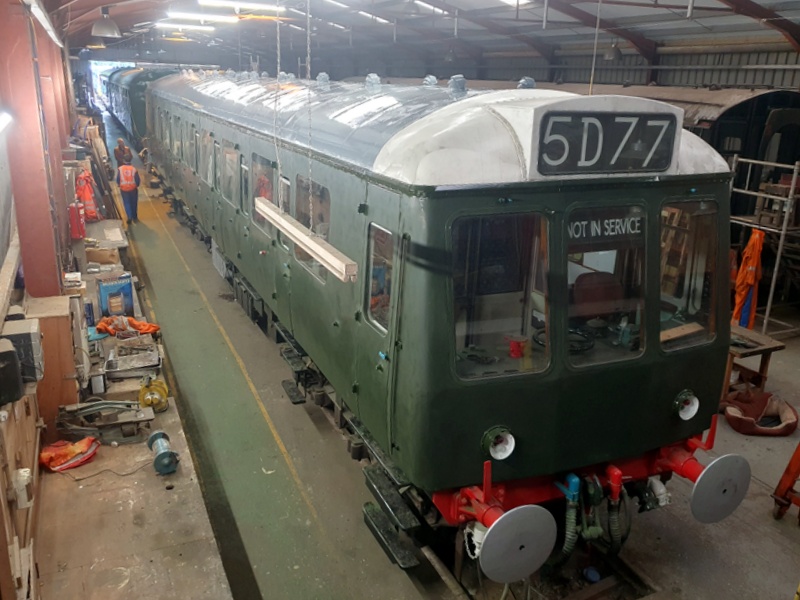
Work continued with the cleaning and fitting of the luggage racks and the construction of beading for the bottom of the wall panels...
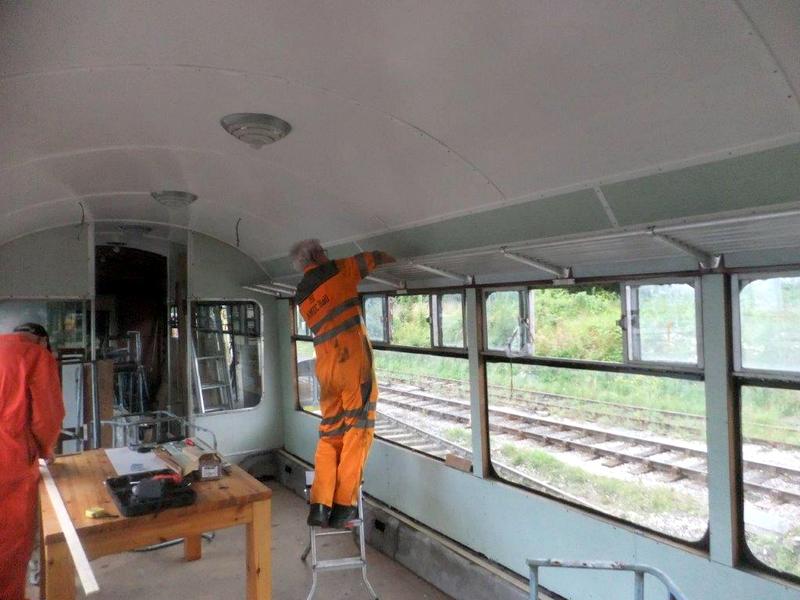
I was assured that the following is a picture of two members of the group cleaning luggage racks (over on the left-hand side) and that the arrival on the scene of the large, yellow track machine was purely coincidental and certainly not more interesting! :-)
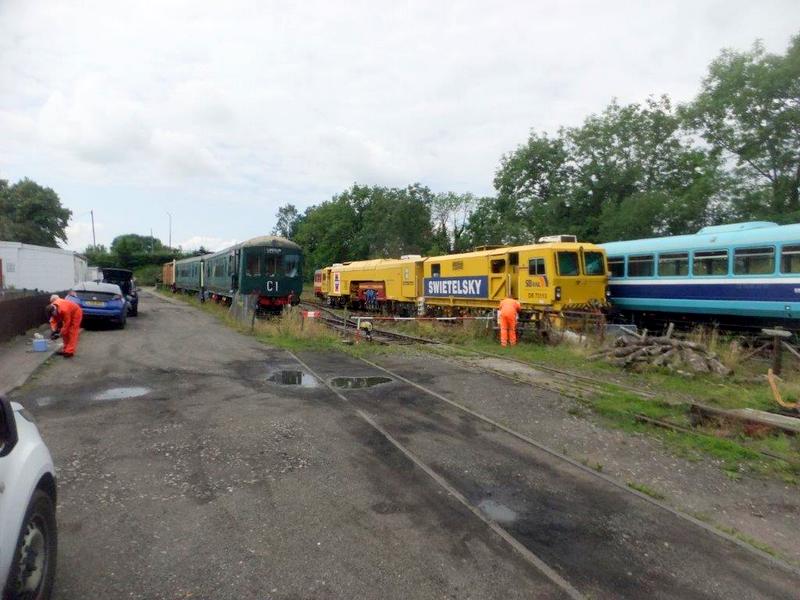
Thanks to Allen Chatwood, John Joyce, Mike Martin, Graham Parkin and Martin Plumb for supplying the pictures and video.